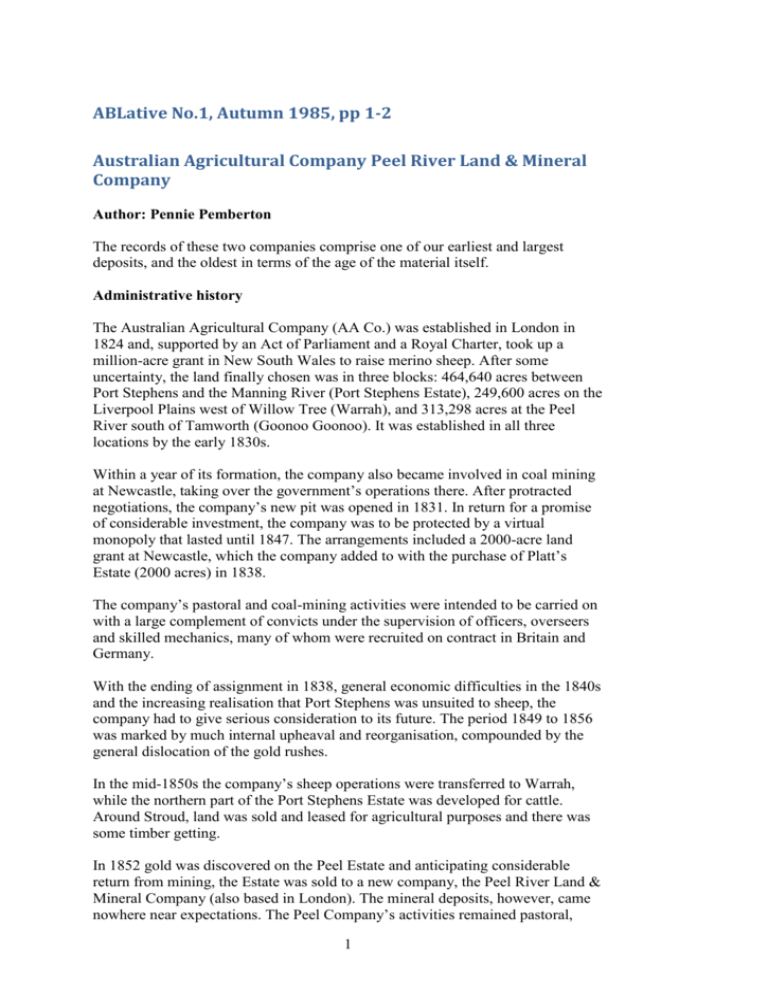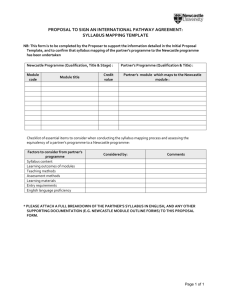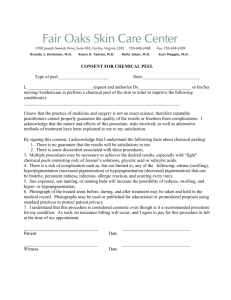Australian Agricultural Company Peel River Land
advertisement

ABLative No.1, Autumn 1985, pp 1-2 Australian Agricultural Company Peel River Land & Mineral Company Author: Pennie Pemberton The records of these two companies comprise one of our earliest and largest deposits, and the oldest in terms of the age of the material itself. Administrative history The Australian Agricultural Company (AA Co.) was established in London in 1824 and, supported by an Act of Parliament and a Royal Charter, took up a million-acre grant in New South Wales to raise merino sheep. After some uncertainty, the land finally chosen was in three blocks: 464,640 acres between Port Stephens and the Manning River (Port Stephens Estate), 249,600 acres on the Liverpool Plains west of Willow Tree (Warrah), and 313,298 acres at the Peel River south of Tamworth (Goonoo Goonoo). It was established in all three locations by the early 1830s. Within a year of its formation, the company also became involved in coal mining at Newcastle, taking over the government’s operations there. After protracted negotiations, the company’s new pit was opened in 1831. In return for a promise of considerable investment, the company was to be protected by a virtual monopoly that lasted until 1847. The arrangements included a 2000-acre land grant at Newcastle, which the company added to with the purchase of Platt’s Estate (2000 acres) in 1838. The company’s pastoral and coal-mining activities were intended to be carried on with a large complement of convicts under the supervision of officers, overseers and skilled mechanics, many of whom were recruited on contract in Britain and Germany. With the ending of assignment in 1838, general economic difficulties in the 1840s and the increasing realisation that Port Stephens was unsuited to sheep, the company had to give serious consideration to its future. The period 1849 to 1856 was marked by much internal upheaval and reorganisation, compounded by the general dislocation of the gold rushes. In the mid-1850s the company’s sheep operations were transferred to Warrah, while the northern part of the Port Stephens Estate was developed for cattle. Around Stroud, land was sold and leased for agricultural purposes and there was some timber getting. In 1852 gold was discovered on the Peel Estate and anticipating considerable return from mining, the Estate was sold to a new company, the Peel River Land & Mineral Company (also based in London). The mineral deposits, however, came nowhere near expectations. The Peel Company’s activities remained pastoral, 1 based at Tamworth, though a series of leaseholds were taken up (and sold) in New South Wales and Queensland to complement Goonoo Goonoo. These included Currawillinghi near Brewarrina (NSW) in 1881 and Avon Downs (NT) in 1921. During the second half of the 19th Century, the AA Co. carried on its dual interest in coal mining at Newcastle and sheep and cattle raising at Warrah. After World War I, the company gradually withdrew from coal mining, including its interest in Hebburn Ltd, purchased in 1902. From the turn of the century, the company increased its land sales at Newcastle, concentrating its activities at Warrah and Windy (West Warrah) and other properties, notably: Corona near Longreach (1902); Bladensburg near Winton (1915); James McLeish Estates: Sandy Camp, Pillawarrina and Narraway at Coonamble (1946); Northern Territory Pastoral Co.: Rockhampton Downs (1948); Cooper River Pastoral Co.: South Galway, Qld (1948); Ivanhoe Grazing Co., WA (1950); and Connor, Doherty and Durack: Auvergne and Newry, NT and Argyle Downs, WA (1950). From 1910 both Warrah and Goonoo Goonoo were greatly reduced in area by resumption and subdivision. From 1932 the AA and Peel Companies’ Australian interests were managed jointly, with the General Superintendent based at Goonoo Goonoo and the Australian Secretary at Newcastle. In 1959 the Peel Company became a wholly owned subsidiary of the AA Co. In 1976 the company’s tax domicile was transferred from London to New South Wales and the Head Office was established in Tamworth. The Australian Office was moved from Newcastle to Tamworth in 1965. The records The records of the AA and Peel Companies, from both the Australian and the London offices and some of the stations, occupy in excess of 315 shelf metres and 100 reels of microfilm. The records of the AA and Peel Co.’s London office include the minutes of the Court of Directors 1824 –1964 together with the minutes of its committees, the minutes and annual reports presented to the shareholders’ meetings 1825-1953, share registers 1874-1970, and ledgers 1825-1947. However, by far the largest and most frequently used series is that of the despatches from New South Wales, written by the Agent/ Commissioner/ General Superintendent to the Directors, at least monthly from 1825 to 1976. The despatches, with their frequently voluminous enclosures, cover a wide range of company and general matters. They are indexed except for the period to 1830 (for which other internal aids are 2 available) and 1854-58. For the period 1899-1948 there are also ‘private despatches’ addressed to the Chairman. The records of the London office of the Peel Company are similar – however the excellent run of despatches from 1853 is not indexed. There are large gaps in the Australian office records before 1856 although some out-letter books and an incomplete set of despatches have survived. Records of the Colonial Committee, including the minutes, are held in the Macarthur Papers at the Mitchell Library. The Committee, which existed 1824-30, was composed of James Macarthur, H H Macarthur and James Bowman. Records concerning coal As mentioned above, the AA Co. was involved in coal mining in Newcastle, first as the only and later as one of the biggest mining companies to 1906. The records cover all aspects of the getting and selling of coal and include the General Superintendent’s general correspondence on coal matters (1856+), detailed statistics of coal raised and sold, with the break down of costs (1883+), the Colliery Manager’s monthly reports 1862+), fortnightly pay sheets for each pit (1870+), together with minutes and other papers of the Northern Coal Sales Association (‘The Vend’) (1887+). There are also several hundred maps of the coalfield (some of the 1850s, mostly mid 1860s+). Records concerning land The company’s initial grant was one million acres plus two thousand acres at Newcastle. Some farms and grazing lands were leased in the 1840s. In 1847 the company finally received title to its land and began to consider its alienation. In the early 1850s townships were laid out at Stroud, Carrington and Gloucester (all at Port Stephens), (West) Tamworth, (West) Nundle and Goonoo Goonoo, and the first subdivisions were laid out at Newcastle and Pit Town (Hamilton). Tea Gardens (which the Company called ‘Coweambah’) was surveyed in 1864 and Willow Tree (on the Warrah Estate) in 1908. In 1849 the Directors promoted an emigration scheme which included a 50-acre selection at Port Stephens, but the plan had little success. Most land at Port Stephens was sold by private contract (often through a pre-emptive lease) with the occasional auction. In 1903 the whole of the northern section of the Port Stephens Estate (about 150,000 acres) was sold to the Gloucester Estate Syndicate for subdivision. At Newcastle and Hamilton there was a steady sale of town lots as well as the leasing of urban and agricultural land after 1850. In the early 20th century there were several major subdivisions including Hamilton Garden Suburb, which was planned in 1913 and developed during the 1920s. The records include details of lands sold (the duplicate conveyances are held in the Archives at the University of Newcastle) and leased, applications from the public to buy and lease, correspondence between the General Superintendent and the Company Surveyor, auction posters and several hundred maps. 3 Records concerning indentured servants and emigrants Between 1825 and the 1860s the AA Co. brought to Australia over 600 men, almost all employees under some form of contract, many of them accompanied by their wives and children. In the 1820s the men who came were the senior officers of the company (including Robert Dawson and the company’s first Agent in New South Wales and his successor, entitled Commissioner, Sir Edward Parry), sheep overseers from Scotland, France and Germany, and skilled mechanics. Between 1838 and 1842, with the ending of assignment, the company engaged several groups of colliers, shepherds and Irish labourers, with mixed success. In 1849, as mentioned above, the company floated a short-lived emigration scheme. At the same time they sent out colliers for Newcastle. To counteract the depletions of the gold rushes, more miners were sent out from the Midlands, Lancashire, Wales, and Newcastle-Upon-Tyne, and in 1854/5 several groups of shepherds and miners from Germany. The last group of miners came in 1862 in the aftermath of the 1861 Coal Strike, through the offices of the British Emigration Commissioner. The Archives has an index to these ‘indentured servants’ together with notes on sources of information on them. It should be noted, however, that there is little information, except in a very general form, about the people employed directly in the Colony, whether convict or free, in the period before 1870. Edited November 2001 Additions have been made to the Australian Agricultural Company and the Peel River Land & Mineral Company collection (Australian and London Offices) since this article was published in 1985. Records received include: registration and legal documents, solicitors' files, financial papers, operational records, share records, registers of directors etc., station records, publications, maps and plans and realia. 4





